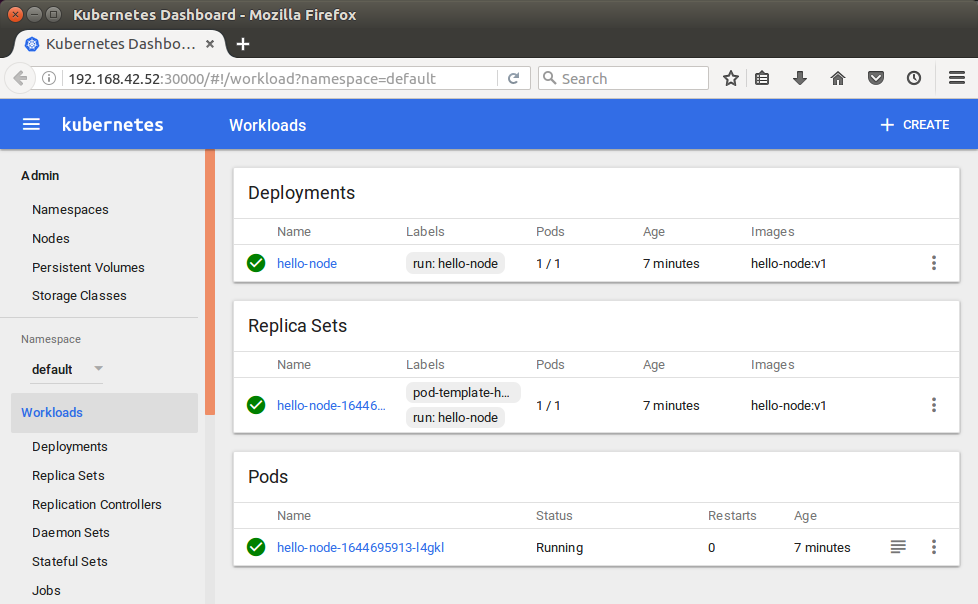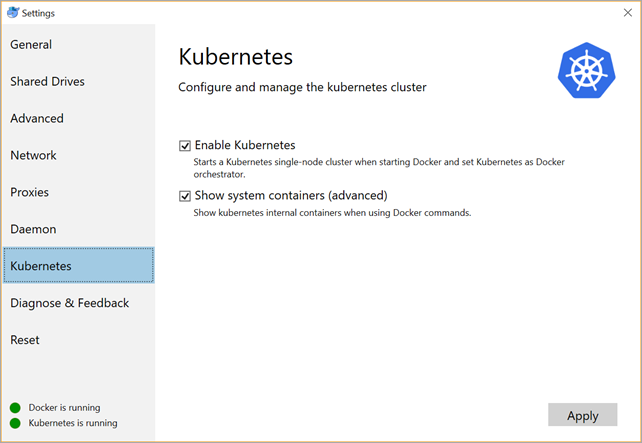

- DOCKER DESKTOP KUBERNETES VS MINIKUBE INSTALL
- DOCKER DESKTOP KUBERNETES VS MINIKUBE FULL
- DOCKER DESKTOP KUBERNETES VS MINIKUBE WINDOWS
The lightweight Utility VM on the other hand, is integrated with host OS, super fast to boot (i.e. Traditional VM is isolated from host OS, slow to boot and has large memory footprint. It is called a VM, but very different from the traditional sense of VM such as VirtualBox or VMware. The innovative component is the lightweight Linux Utility VM.
DOCKER DESKTOP KUBERNETES VS MINIKUBE FULL
(Bootstrapping distro) Docker desktop… Viewer does not support full SVG 1.1
DOCKER DESKTOP KUBERNETES VS MINIKUBE WINDOWS
This post has a diagram of Docker on Windows with Hyper-V backend. At that time The Hypver-V backend was still the only option to host docker container during the first version of WSL. The absence of Linux kernel in WSL, makes it useless for Docker setup. The user space contains GNU Bash shell, command language, command-line tools and interpreters. Neither the Linux kernel code, or a hypervisor is involved. The first release of WSL provides a Linux-compatible kernel interface and runs a GNU user space on top of the interface. Docker refers to containers running in this architecture as “Windows Containers”, which is a misnomer in my opinion. A LinuxKit distro is running on the Hypver-V VM, provider Linux kernel capabilities. Traditionally, Docker on Windows was implemented with Hyper-V as the hypervisor. For example, Hyper-V backend, and Windows Subsystem Linux (WSL) backend.

There have been a couple of efforts to run Linux virtual machine on Windows. Docker-Desktop on Windowsĭocker works with Linux kernel. This mapping renders a lot of symbolic link as dangled, even though they are actually not on the host file system. Note that the root directory on the host is mounted to container’s file system as /host. Kubectl debug node/docker-desktop -it -image=/aks/fundamental/base-ubuntu:v0.0.11 The process can be found with ps command: Hyperkit is installed as part of docker desktop. LinuxKit started as an internal project in Docker Inc and is now managed as a Moby Project. It supports several well-known hypervisor platforms, such as HyperKit, Hyper-V, qemu and VMware.

HyperKit is lightweight and therefore allows you to embed hypervisor capabilities in your application.

DOCKER DESKTOP KUBERNETES VS MINIKUBE INSTALL
I will start with with a deep dive into the docker-desktop architecture, then we’ll go through the steps to install some common applications with Kubernetes. I wanted to note down what is on earth different about Docker-desktop, because the instructions for applications might differ slightly between single-node cluster on MacOS/Windows and the “real” multi-node cluster. However, there are always nuances, which motivates me to write this blog. For its versatility, docker-desktop is a great development environment. It can be blown away and reset in a heartbeat (with the button “Reset Kubernetes Cluster”). It is installed simply by enabling the option “Enable Kubernetes”. Minikube, MicroK8s, kind, or k3s with the k3d wrapper), docker-desktop has a significant advantage: it comes with Docker installation, on MacOS, or on Windows. While there are many tools to set up single-node Kubernetes cluster (e.g.


 0 kommentar(er)
0 kommentar(er)
